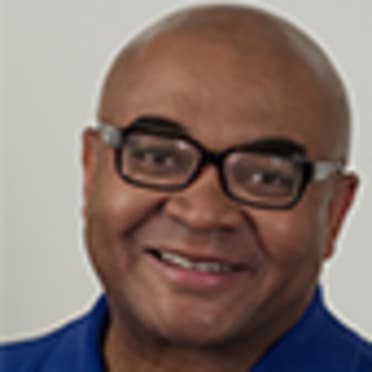DENVER -- With more being asked of the Rockies’ Ryan McMahon, his offseason is devoted to less.
That’s less movement of the hands and upper body, and less effort at the start of his swing. These subtractions are designed to produce more home runs and extra-base hits, and more consistent contact.
Count McMahon, 26, among Major League players who in 2020 struggled, pressed and ultimately didn’t have enough game action to improve their statistics. The hard contact was there for McMahon, with nine homers, six doubles and a triple. But so was the non-contact, with 66 strikeouts in 193 plate appearances (34.2 percent), a .215 batting average and a .295 on-base percentage.
The new season brings another reason to press. McMahon is the likely replacement at third base for eight-time Gold Glove winner and three-time National League home run leader Nolan Arenado.
But McMahon enters ’21 with the lessons of ’20 fresh in his mind.
“I would say personally I didn't like how I was going, and for the team I didn't like how it was going,” McMahon said. “I’m going to forget all the noise. I’m going to forget everything like that. That’s usually something I’m really good at -- when it’s game time, competing. I think I got a little carried away in my own head.”
Statcast readings from last season suggest McMahon has production potential to unlock.
McMahon led the Rockies in average home run distance (419 feet), average exit velocity (90.1 mph) and rate of plate appearances with a barrel (6.2 percent) -- with a minimum of 186 plate appearances required to be listed among league leaders. But the high strikeouts and low batting average show he didn’t deliver hard hits nearly enough.
A normal season would have given him game opportunities to improve his numbers, along with more off-field and batting cage time with coaches and teammates. But COVID-19 protocols kept time in the park at a minimum.
After such a lonely endeavor, McMahon is not going it alone in the offseason -- even while practicing physical distancing.
“Obviously, it would be easier if everybody’s in the same room, but Zoom has made some things a little more possible, a little more feasible,” McMahon said.
McMahon has had frequent Zoom sessions with hitting coach Dave Magadan and assistant hitting coach Jeff Salazar. He has also enlisted Triple-A hitting coach Tim Doherty and a former Minor League teammate, Jordan Patterson, who can remember past swing adjustments. He's also had hitting sessions in Phoenix with Rockies catcher Dom Nuñez and Mets third baseman J.D. Davis, who are training together.
The resulting adjustments are still in progress. Here’s a look:
• McMahon wants to be more efficient using his legs, although he says that part of his stance and setup “probably won’t look much different.”
• He has lowered his hands to a level he used while in the Minors.
• These adjustments could eliminate mechanics that practically had McMahon’s back to the pitcher and the bat knob pointed at the umpire at the start of the swing. Those movements slowed the barrel.
A Statcast look at McMahon’s swings and misses reveals an above-MLB average rate over the middle, in and out of the zone. Many of these misses occurred on fastballs early in counts, which became the popular strategy against him, since his complicated mechanics made his swing late. In turn, missing or fouling a hittable pitch early in the count leads to chasing late in the count.

Can the adjustments allow McMahon repeat performances like Aug. 10 and 11 during the 2018 season, when homers off 92 and 95 mph pitches gave the postseason-bound Rockies victories over the Dodgers? McMahon’s issue is similar to one Rockies shortstop Trevor Story corrected to become one of the sport’s top stars.
“He does a drill where he holds the bat with his top [left] hand, does an early stride and freezes,” Magadan said. “Then he puts his bottom hand on the bat to get that feel for his hands being lower to create a shorter route to the ball. When he does that, it looks special.
“It’s not like we’re asking him to start hitting right-handed, just get into a little better position in the setup. We’re trying to get him in position to make more consistent contact -- 420-foot homers are good. The 470-foot homers will get you on the highlights at the end of the night, but I’d rather see him hit 35-40 homers, 370-420-foot homers and hit .300.”
McMahon, who replaced DJ LeMahieu at second when the Rockies didn’t re-sign him after 2018, gained a head start on replacing Arenado at last season’s end. With Arenado out with a left shoulder injury, McMahon hit .250 with two homers and three doubles and played a solid third base in the final nine games.
“I always will believe in myself, and I always have,” McMahon said. “It’s just that I’ve got to go out and do it.”

